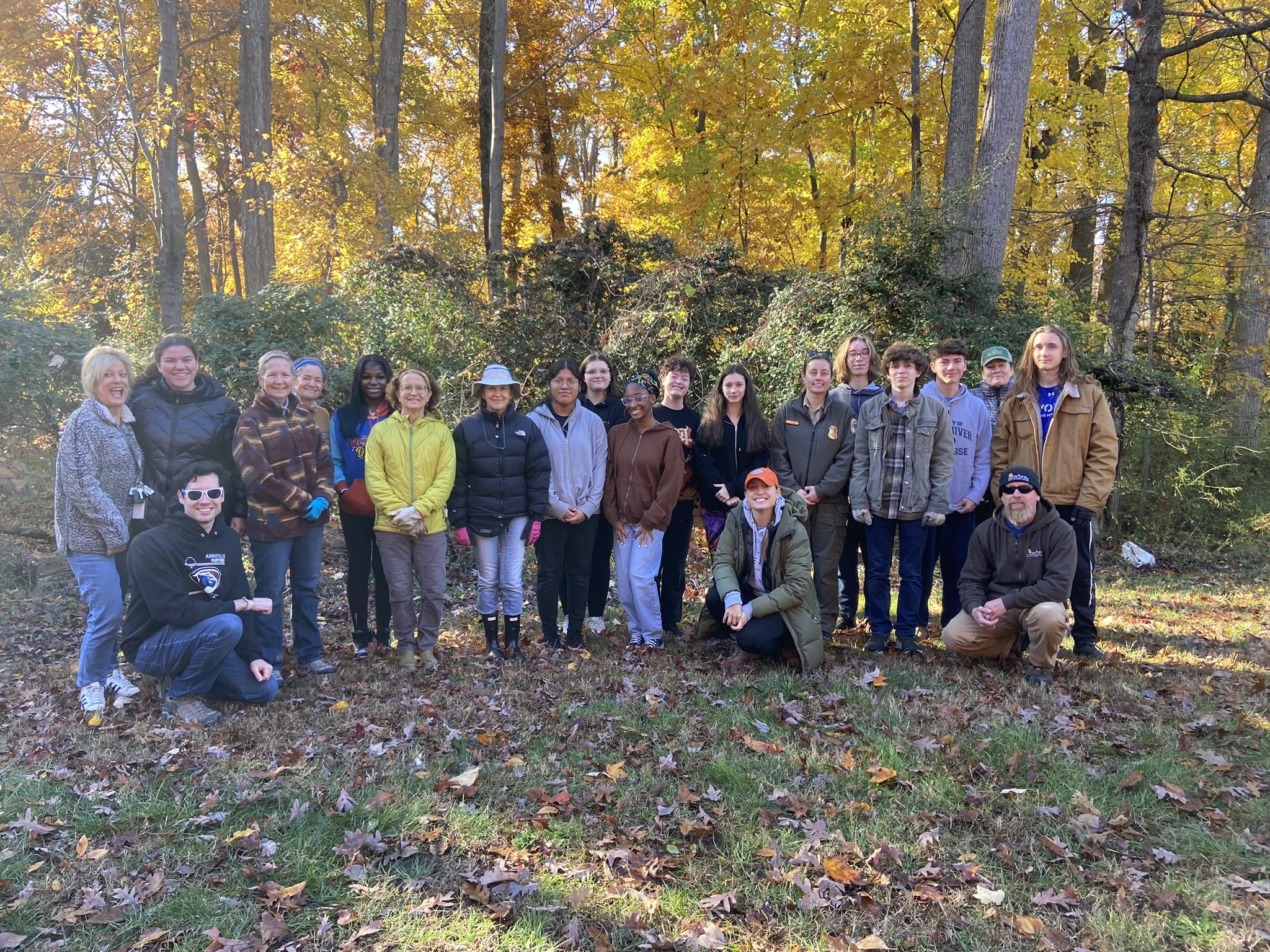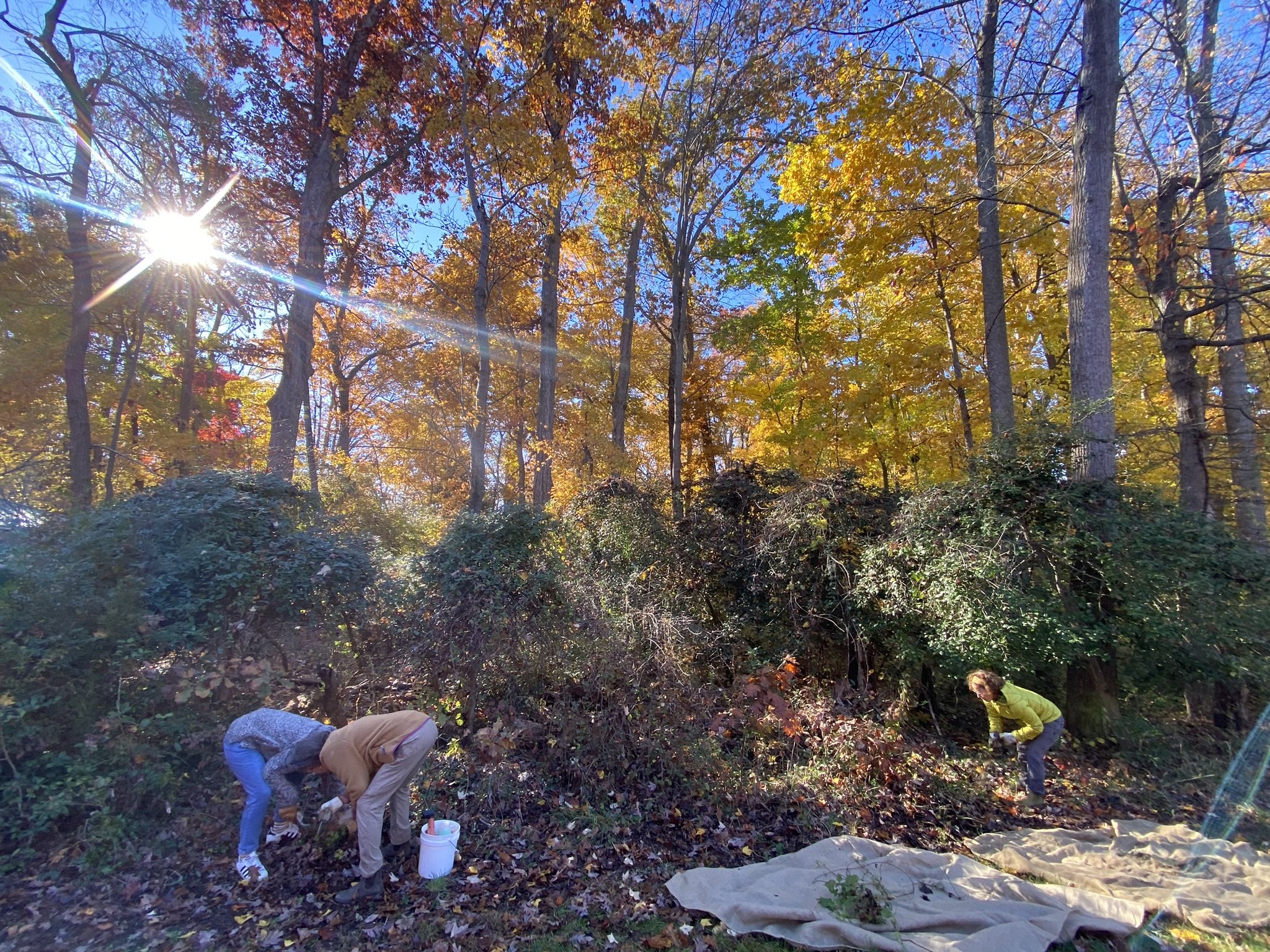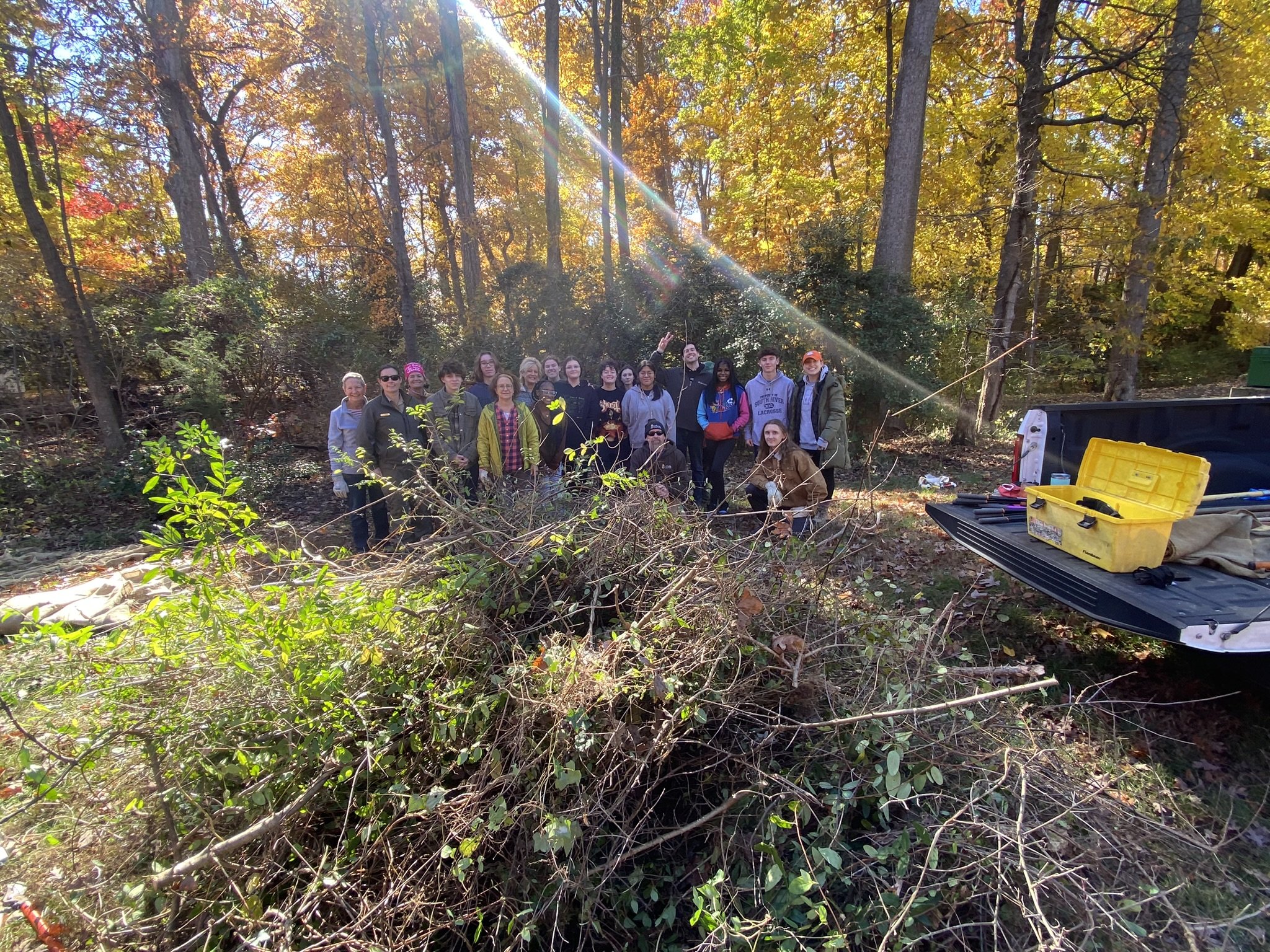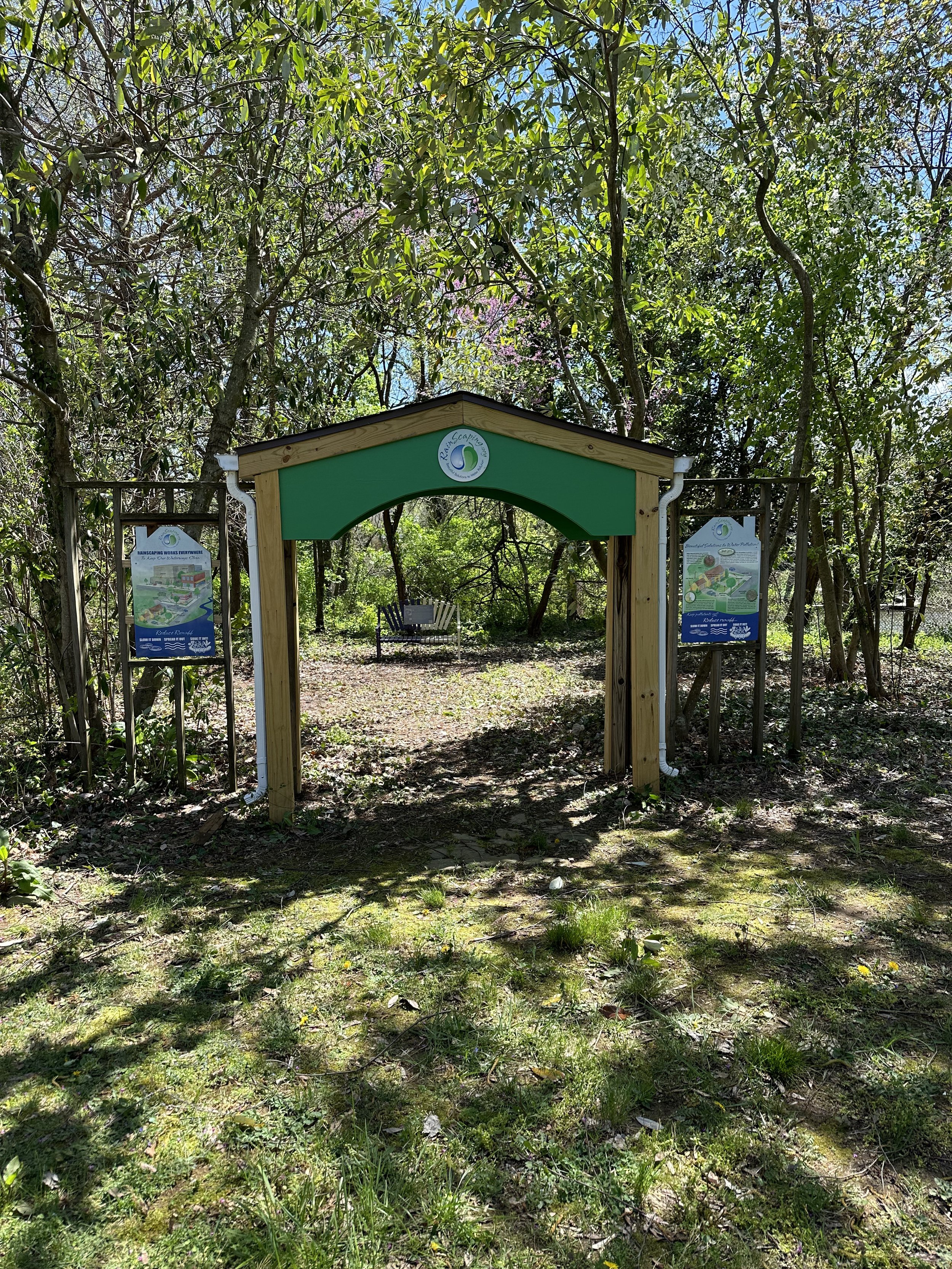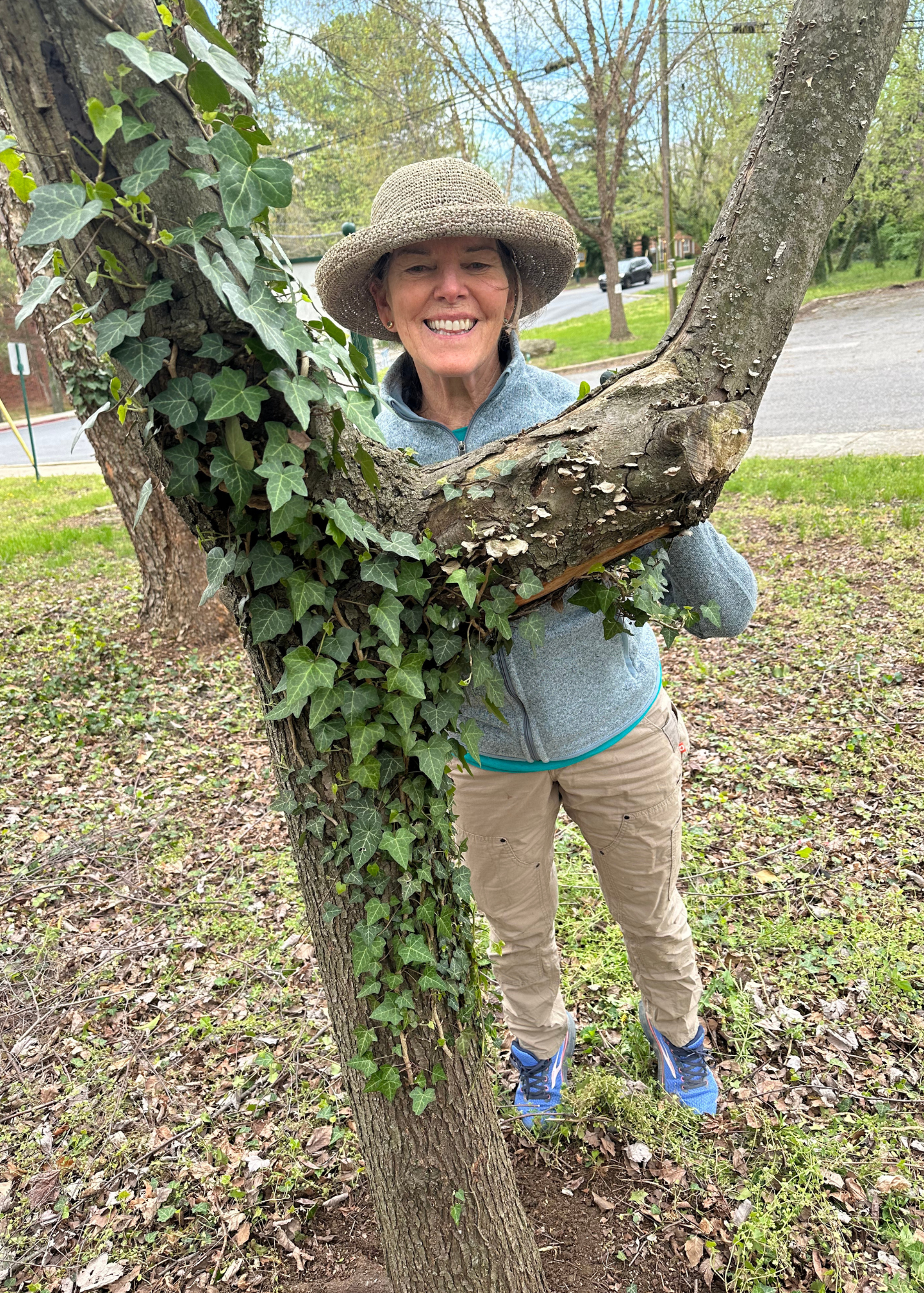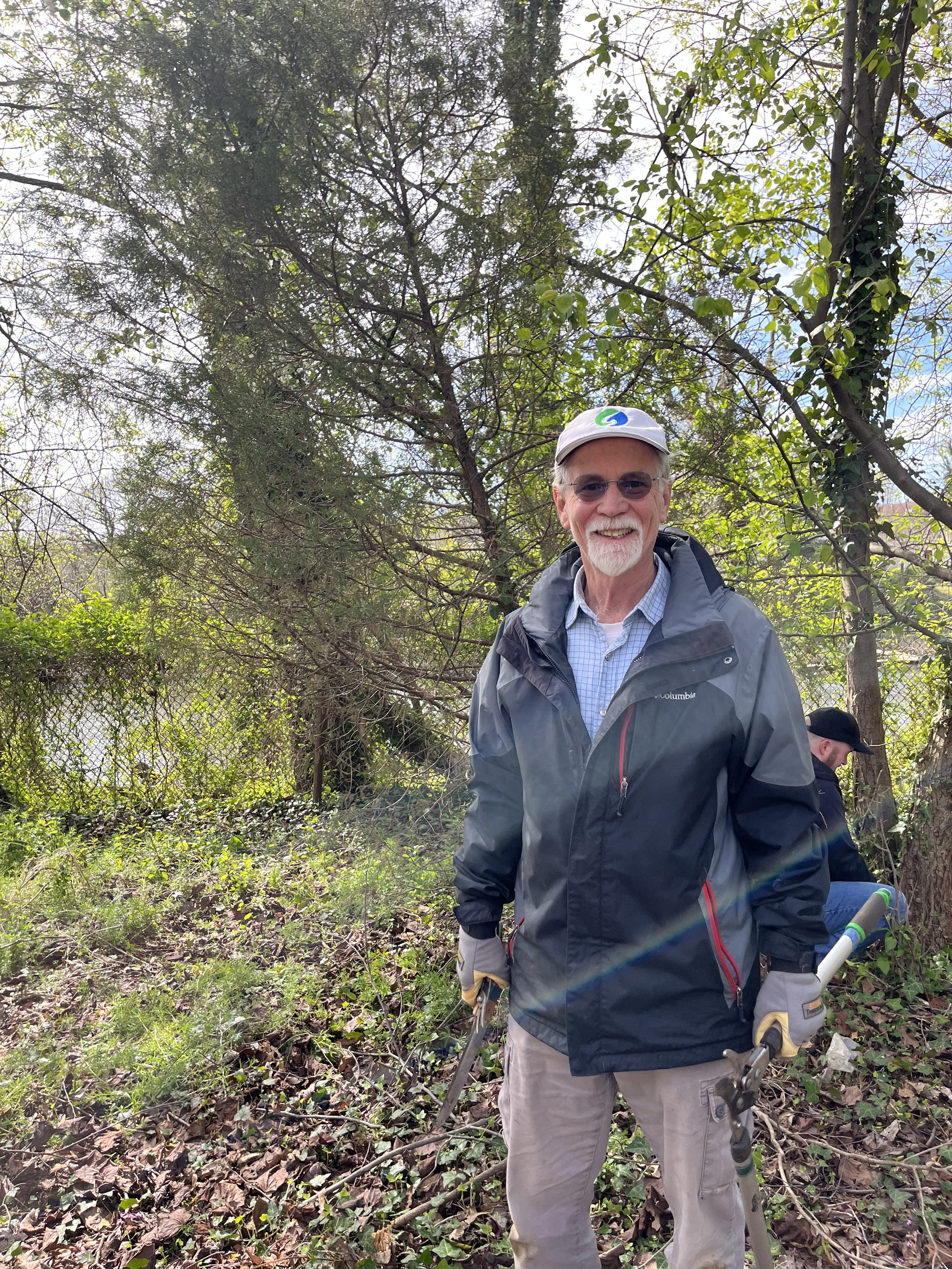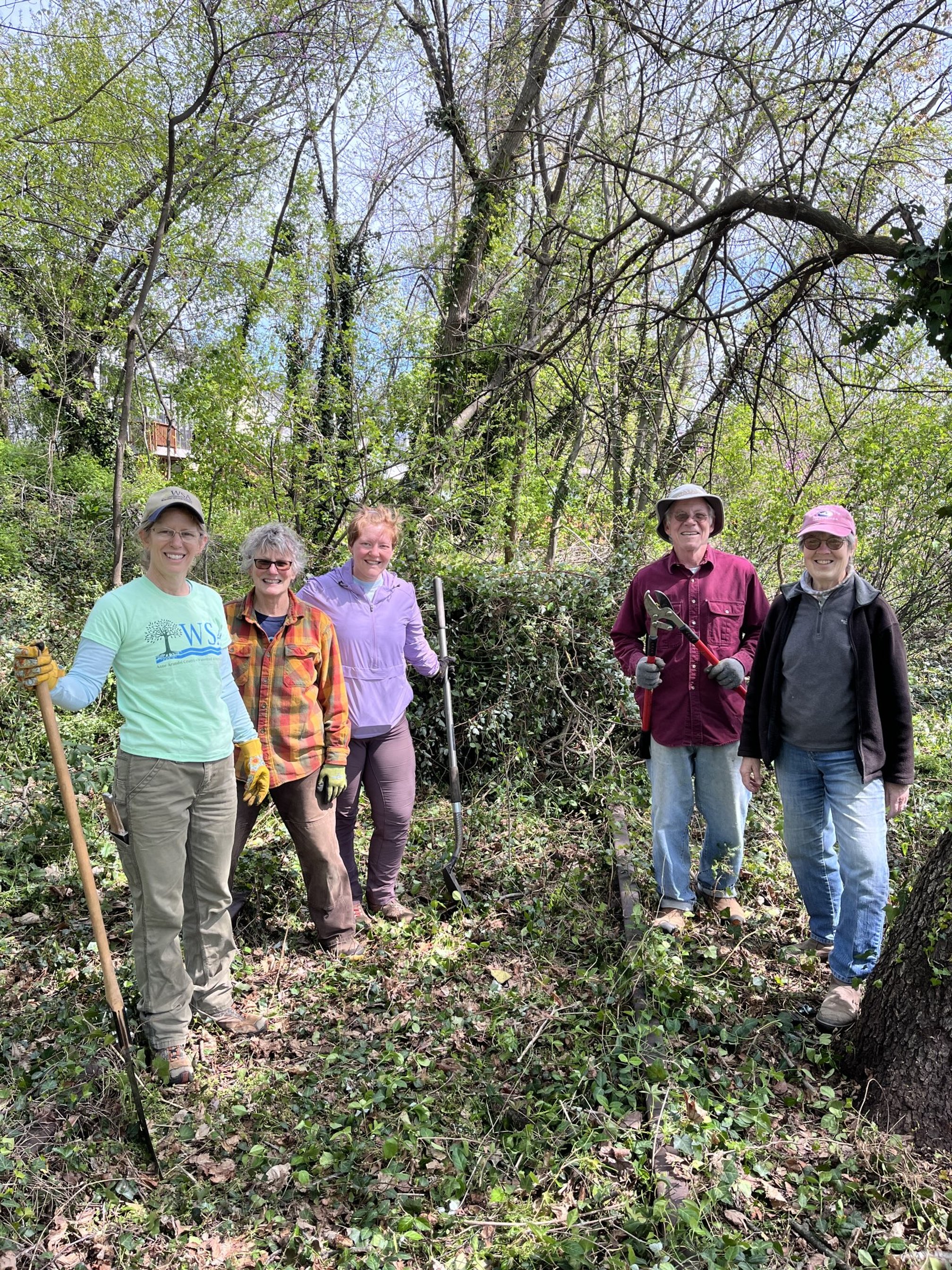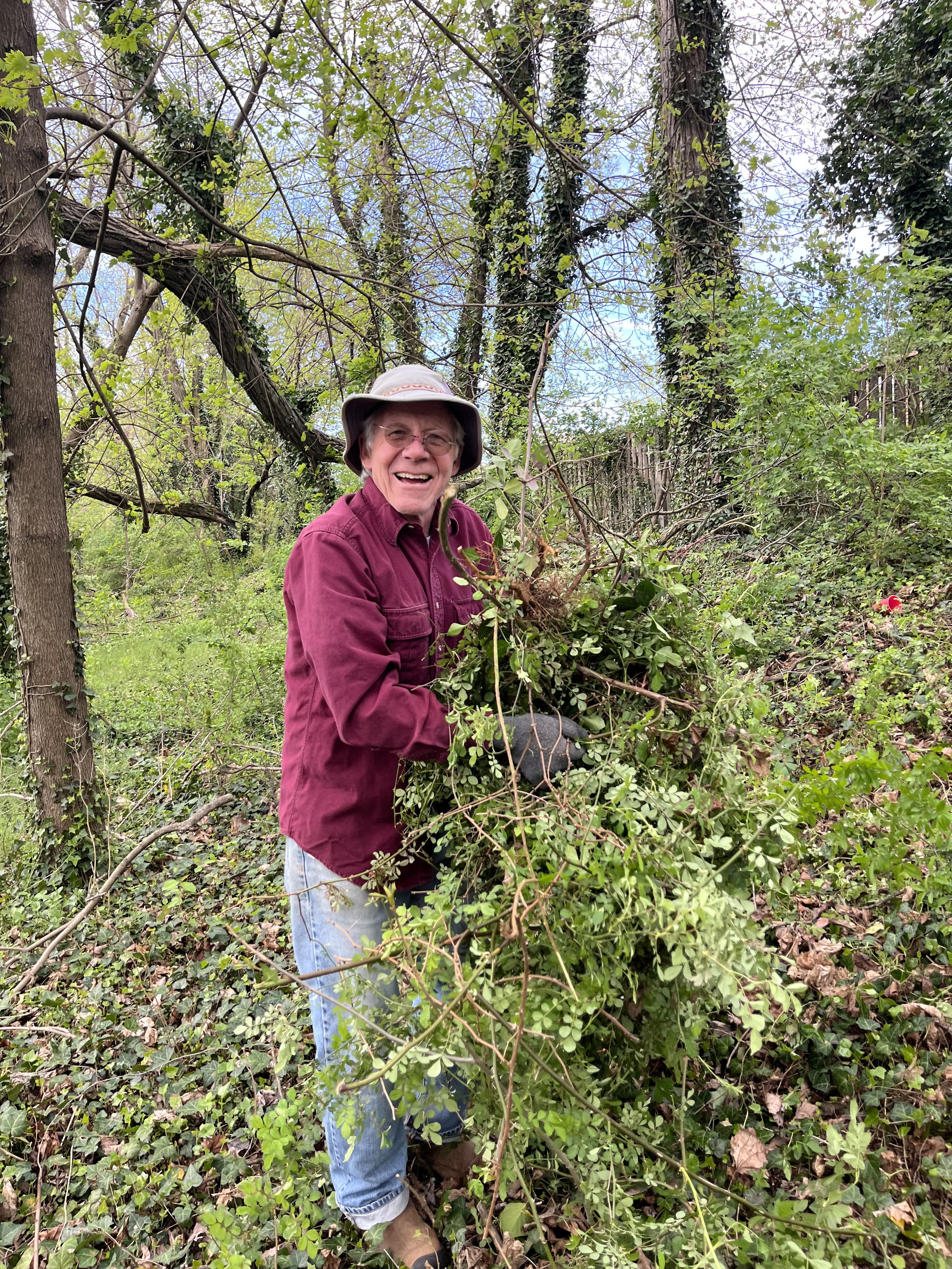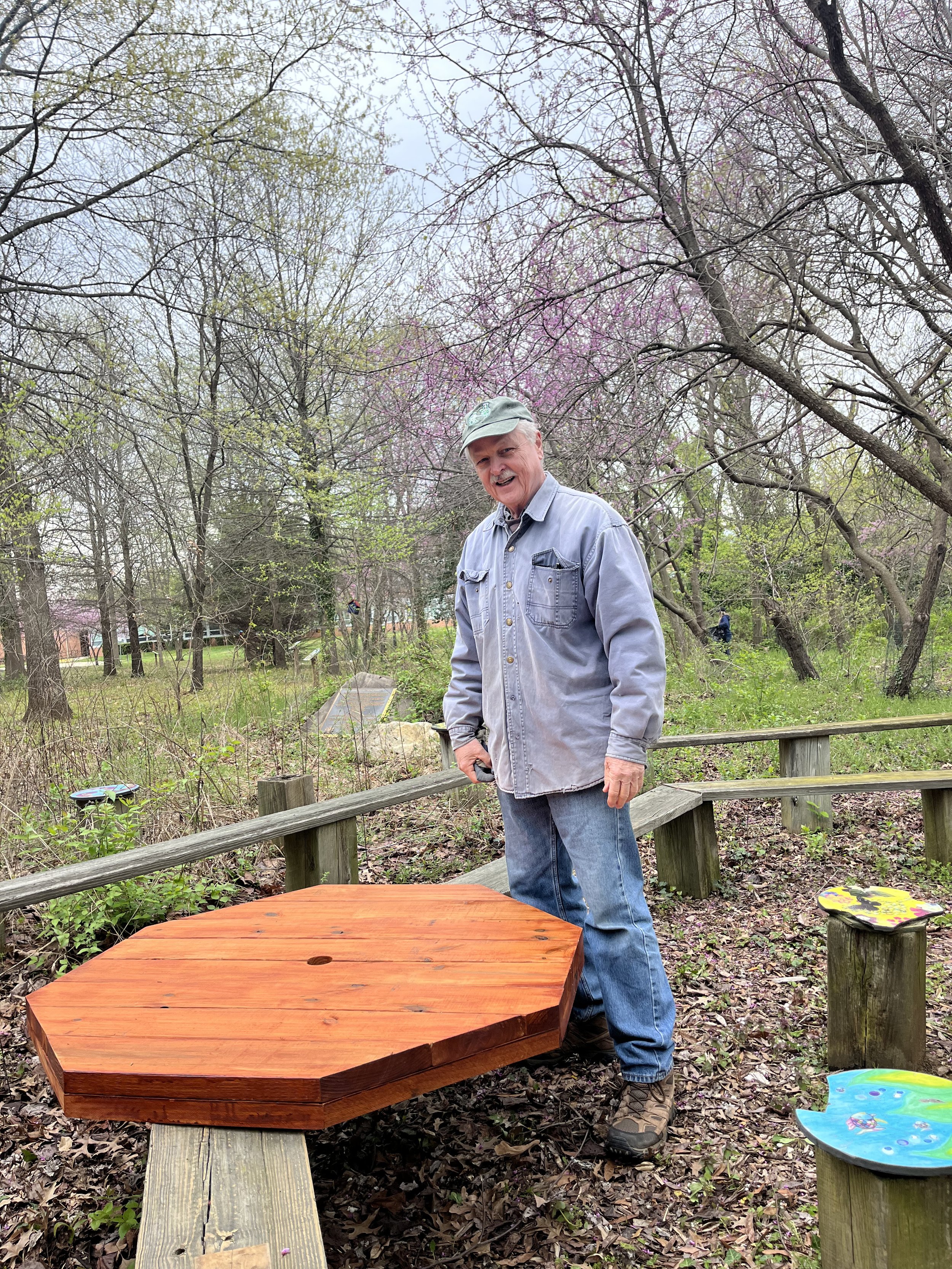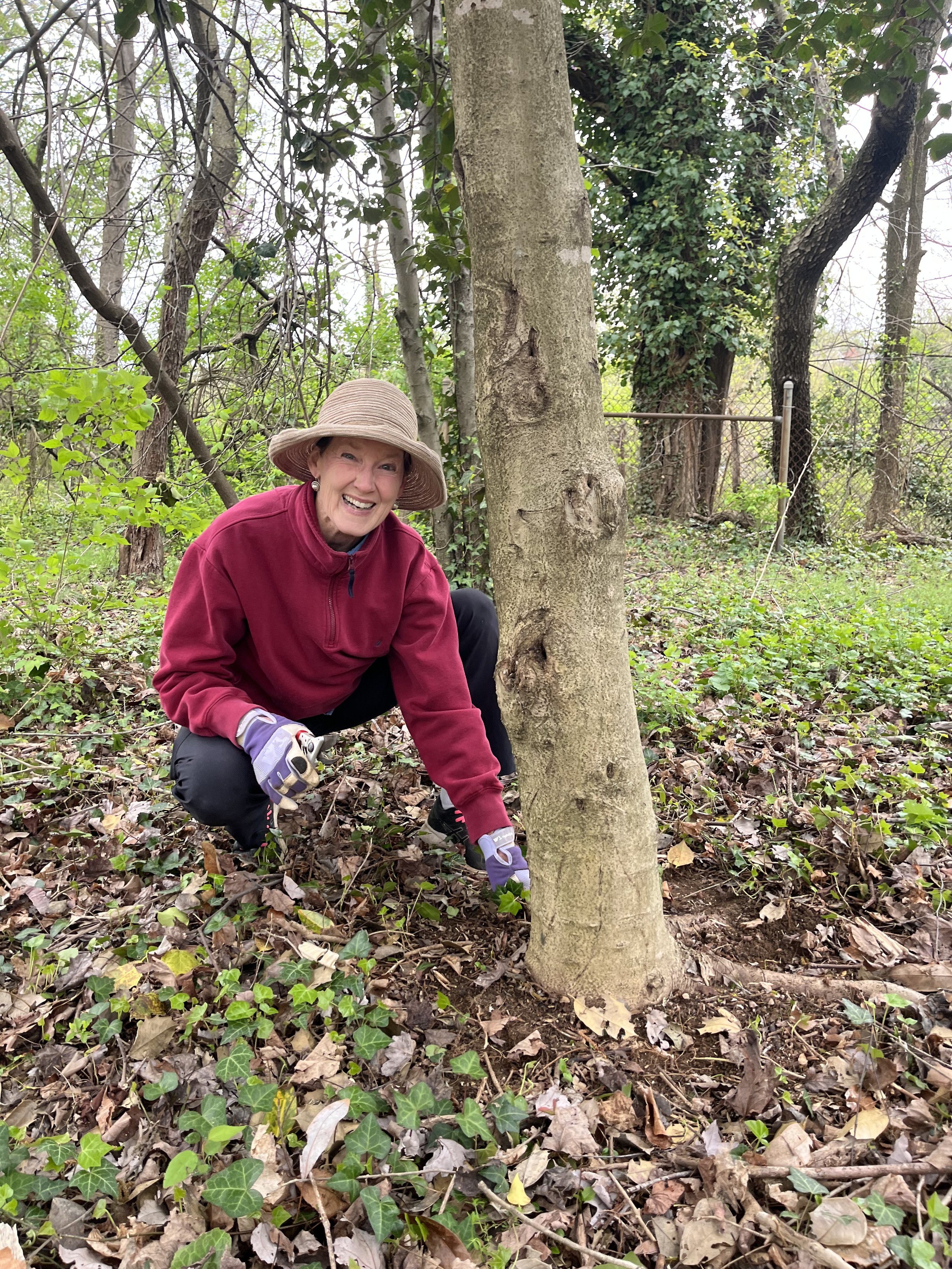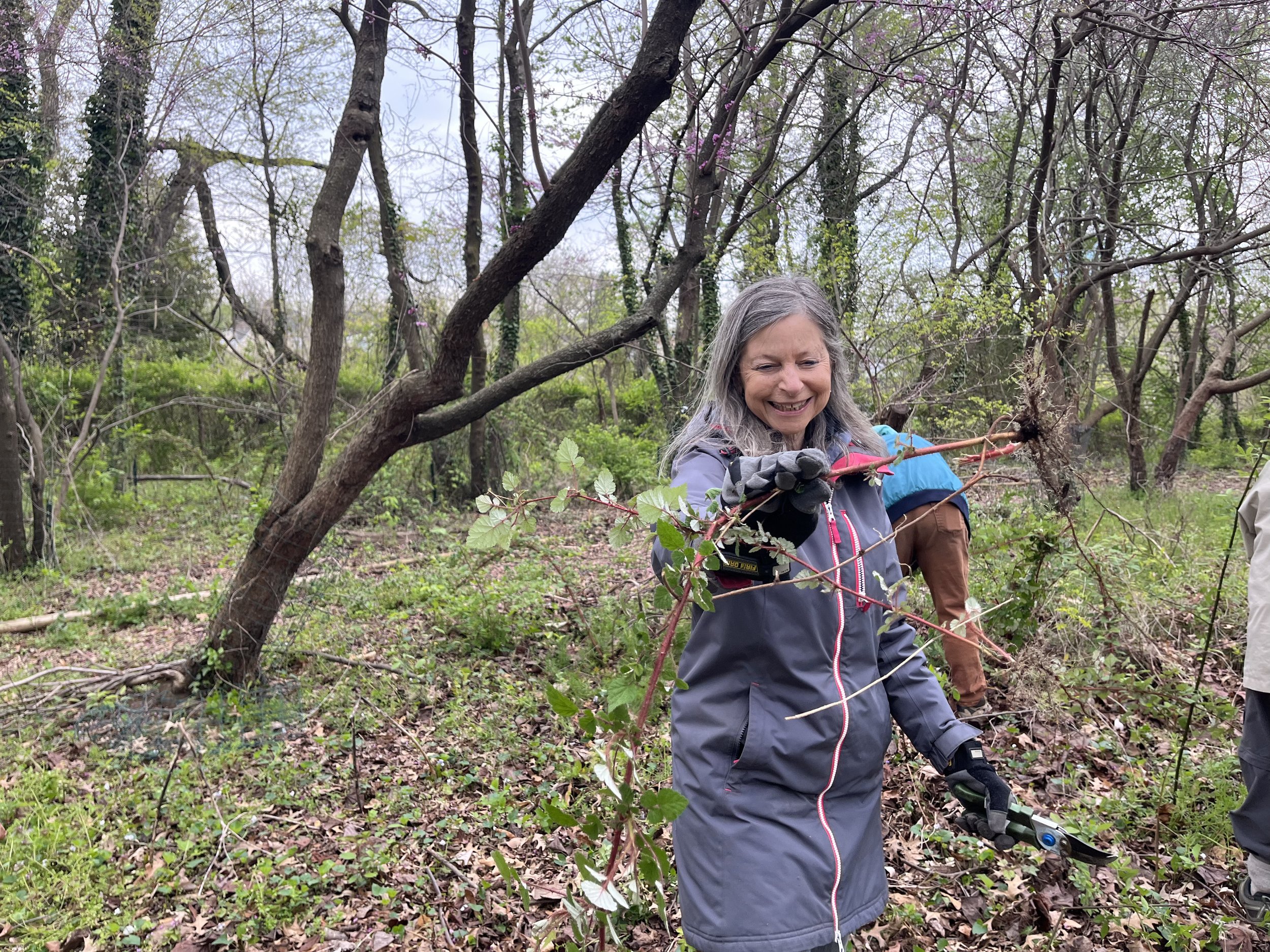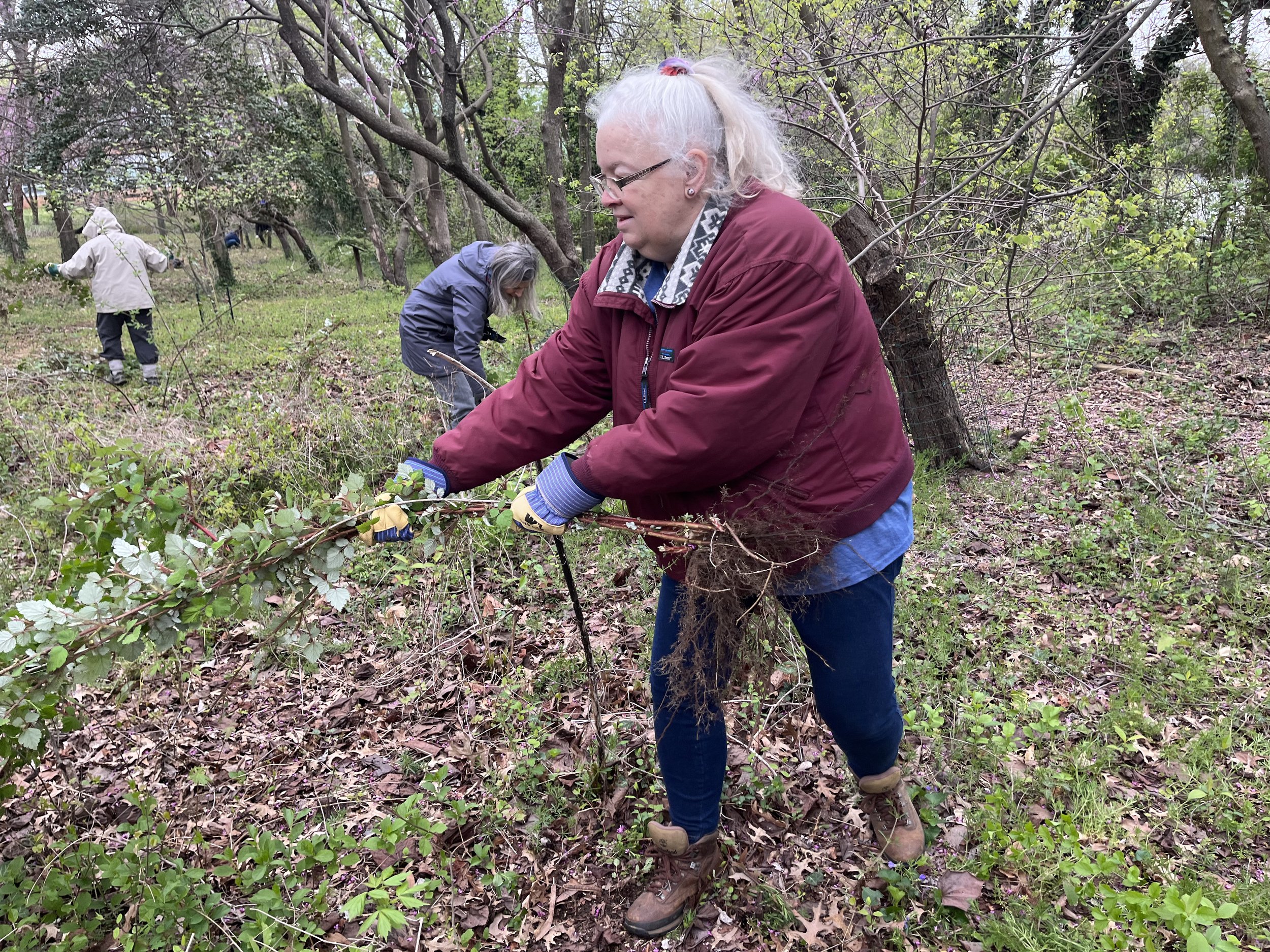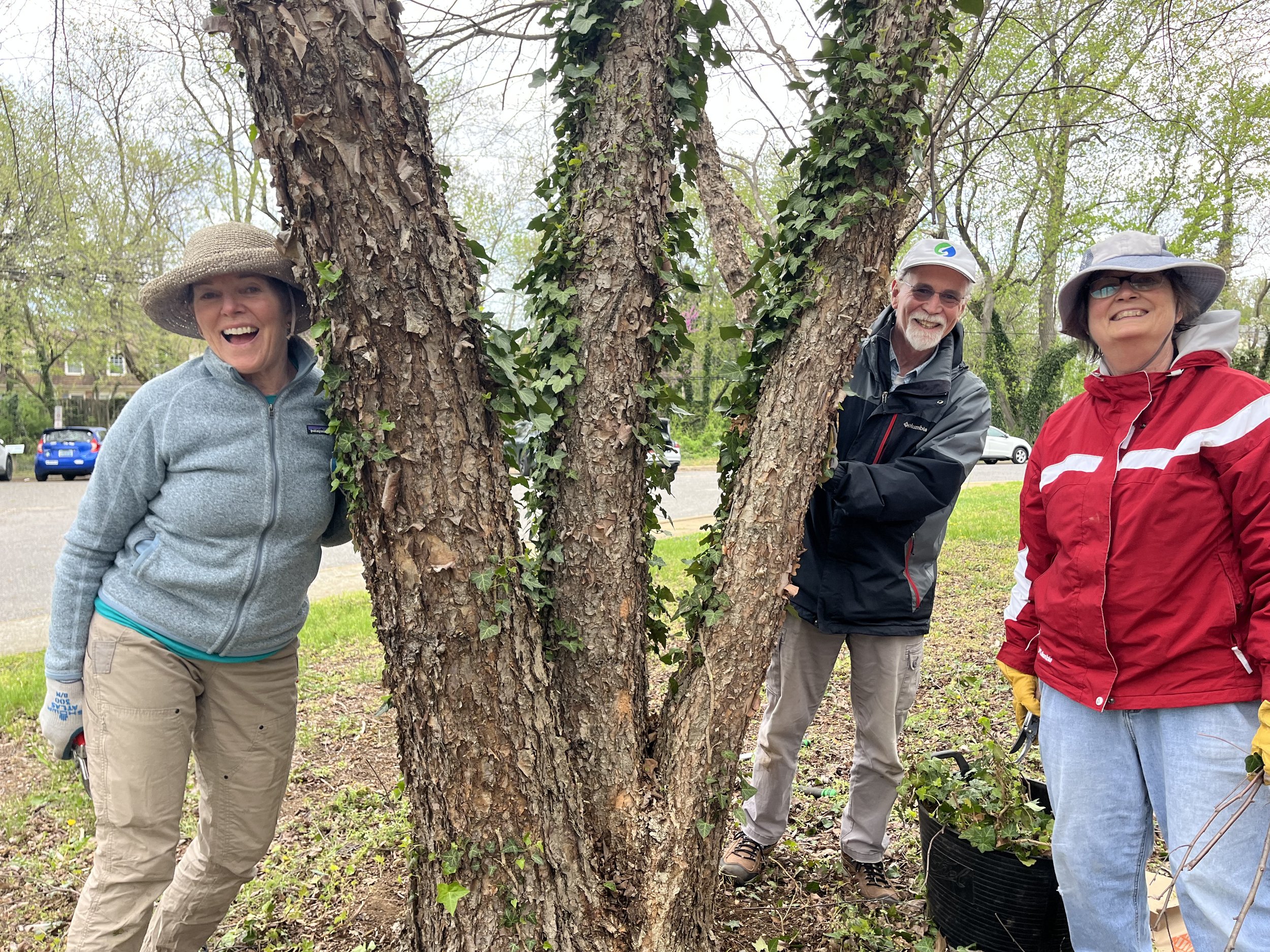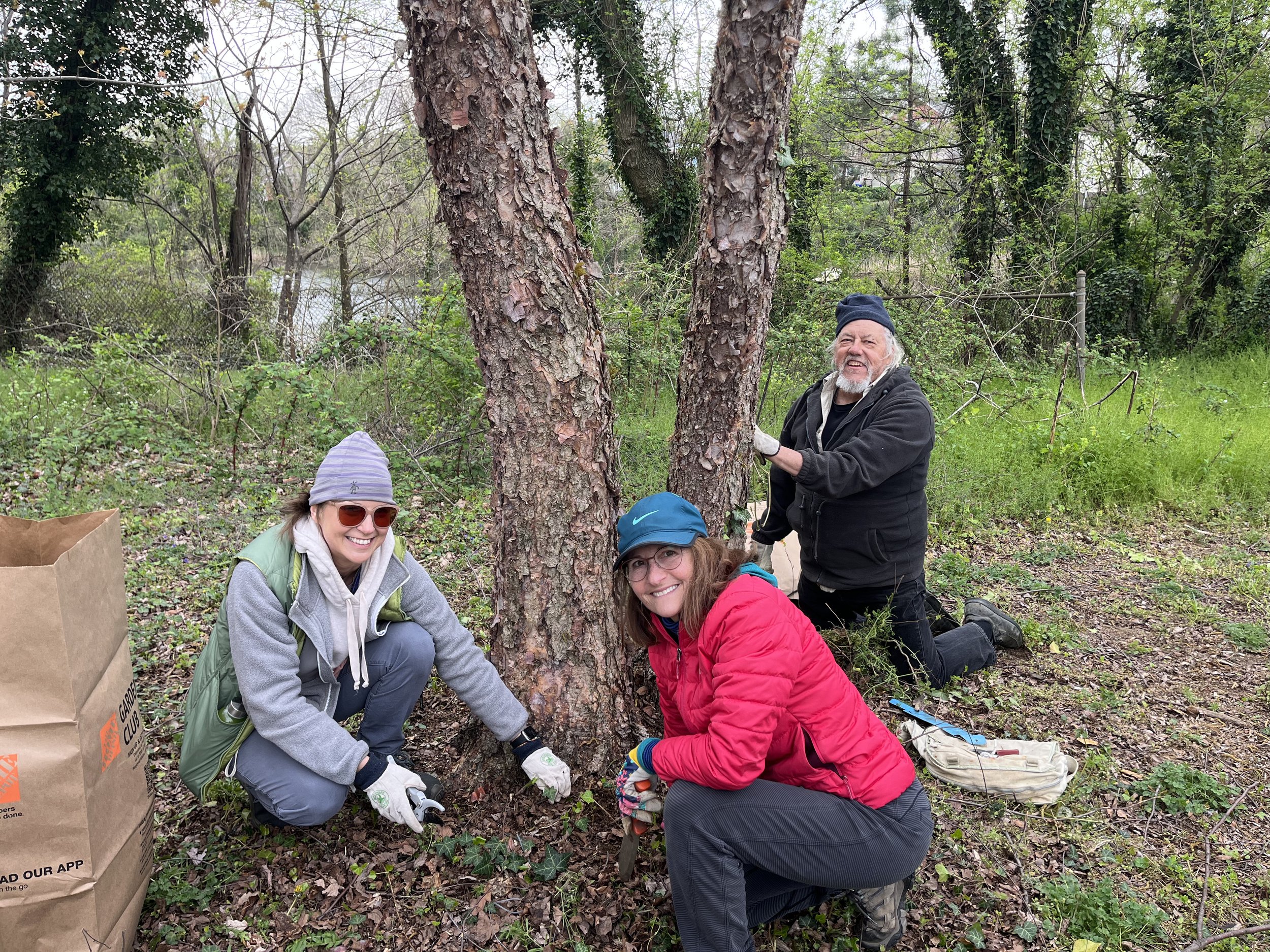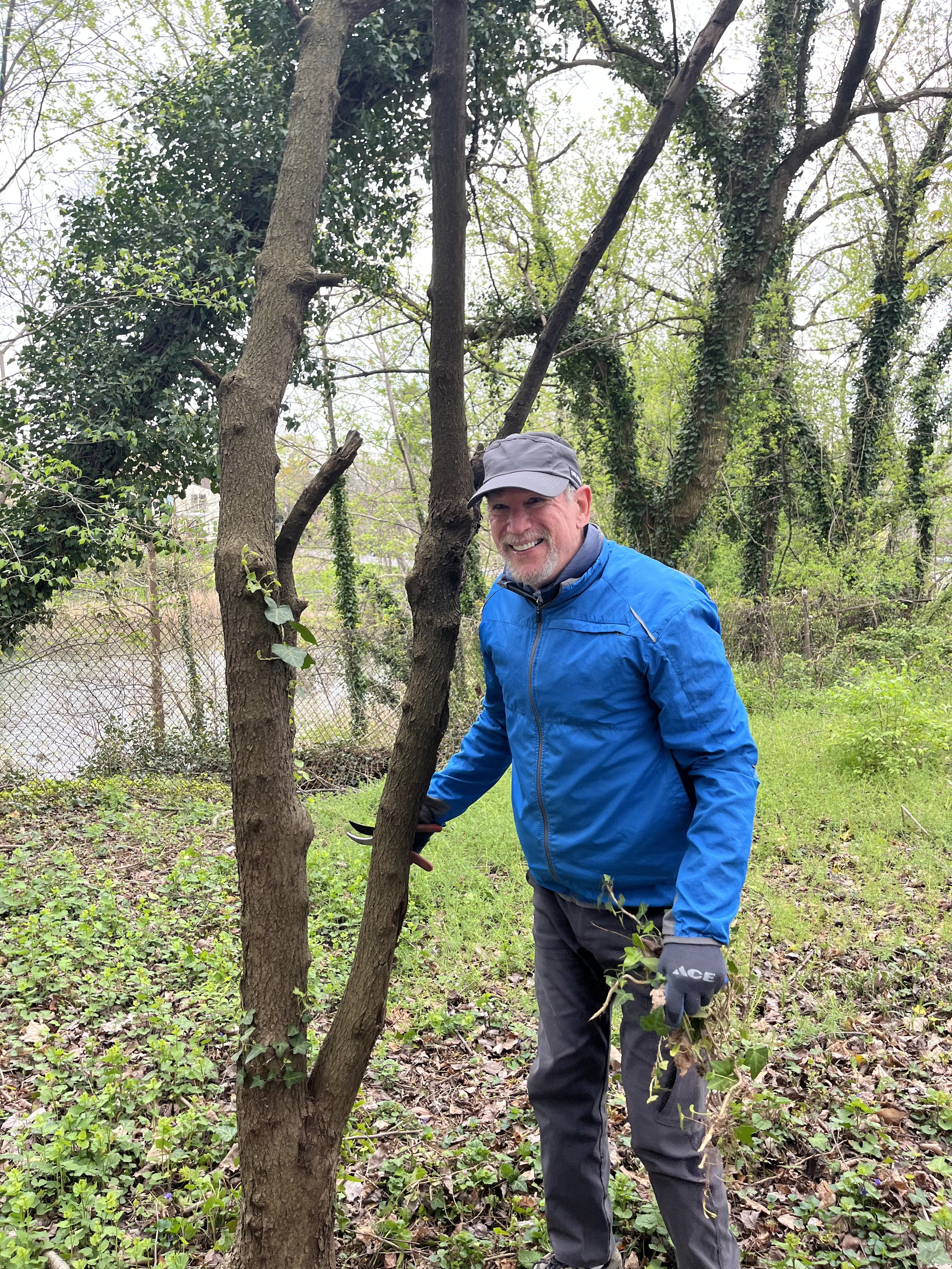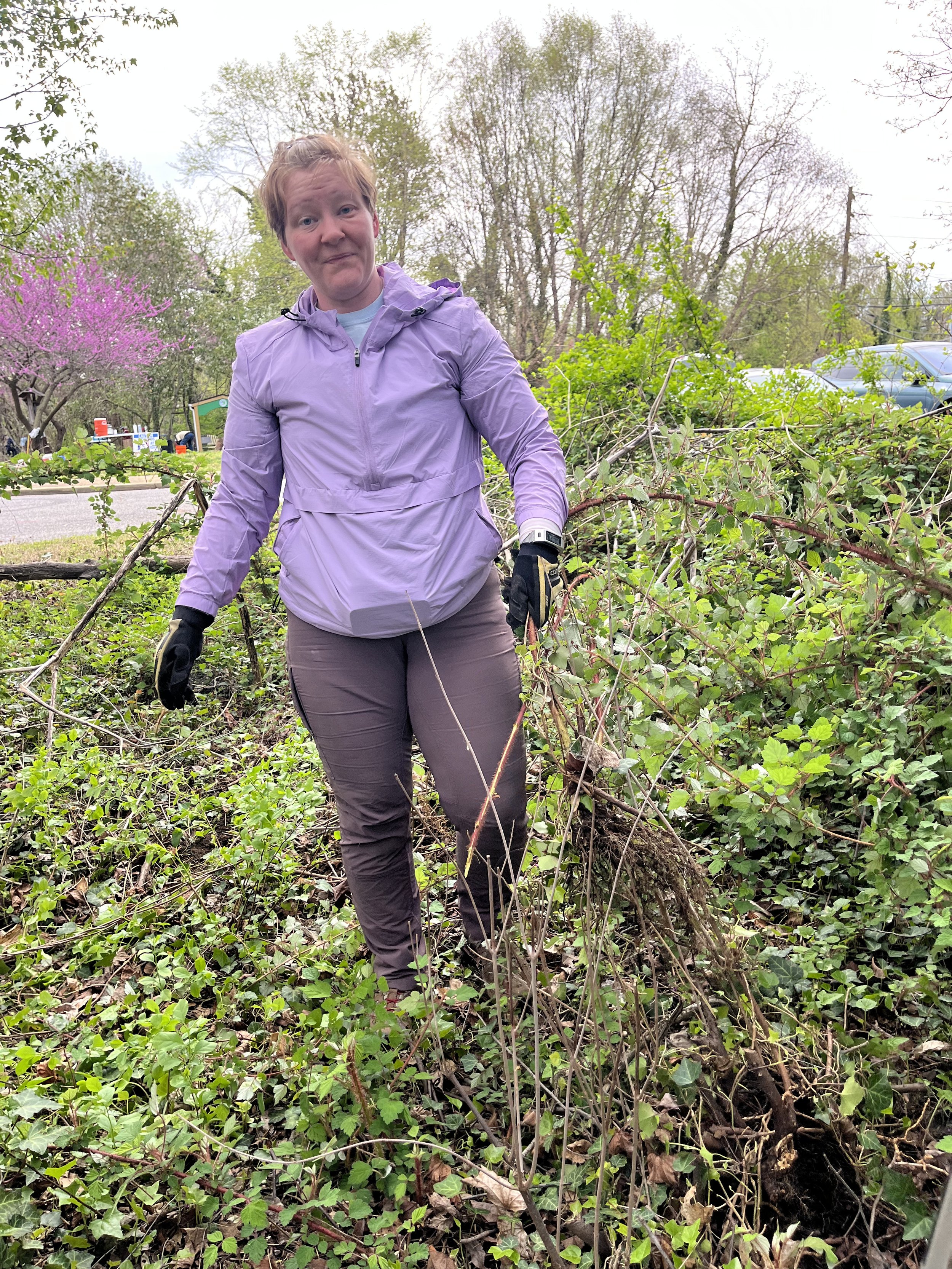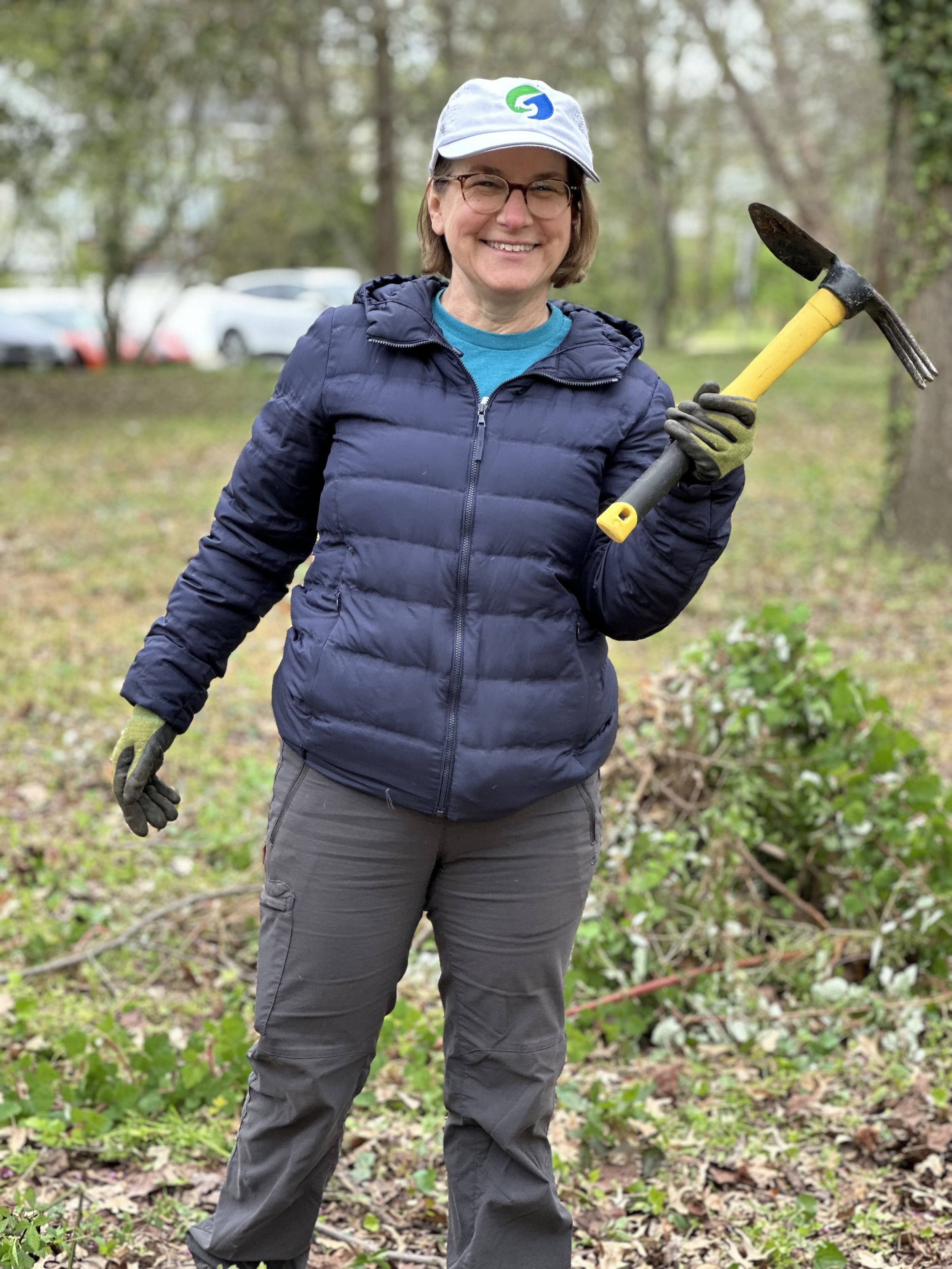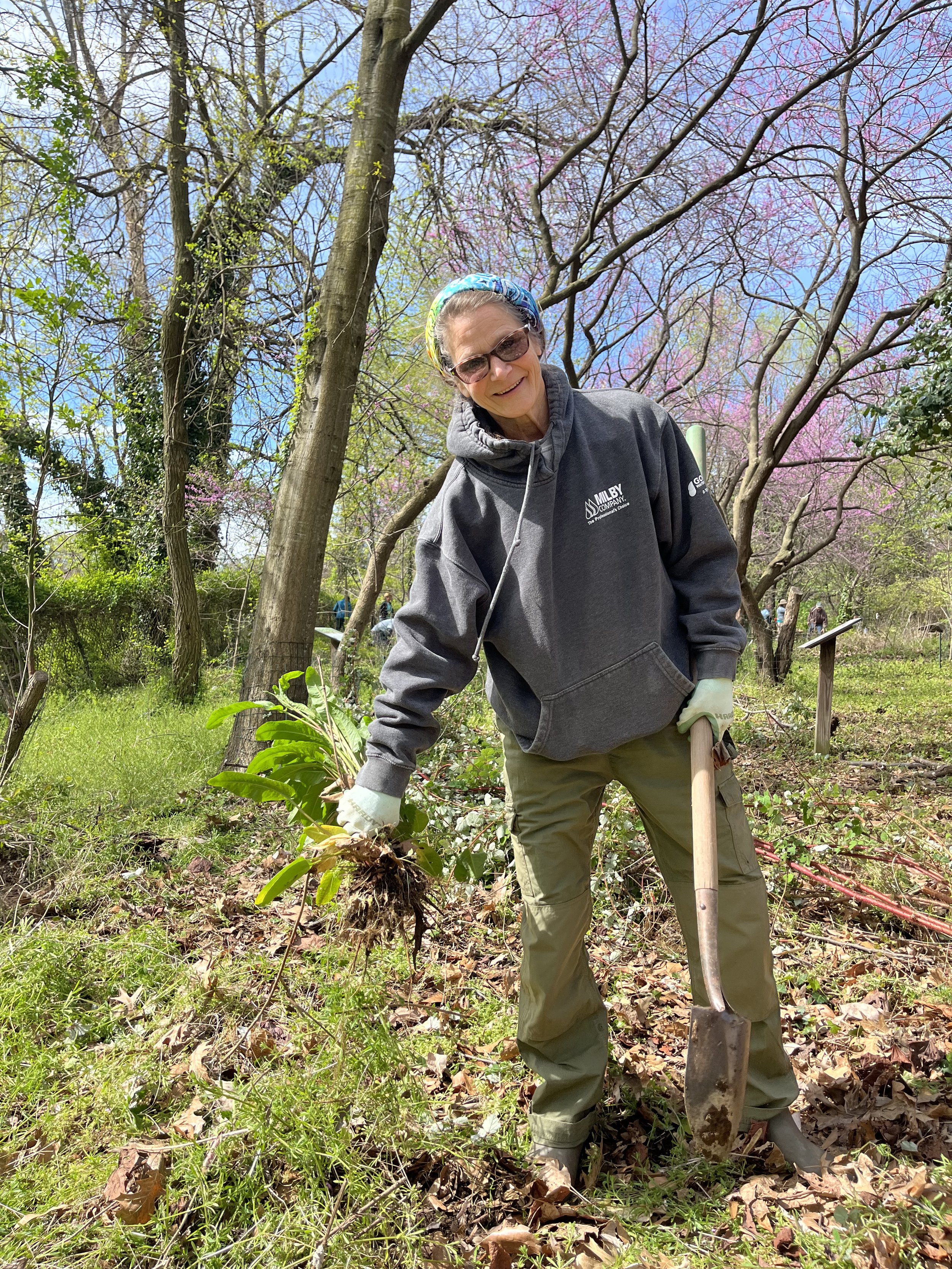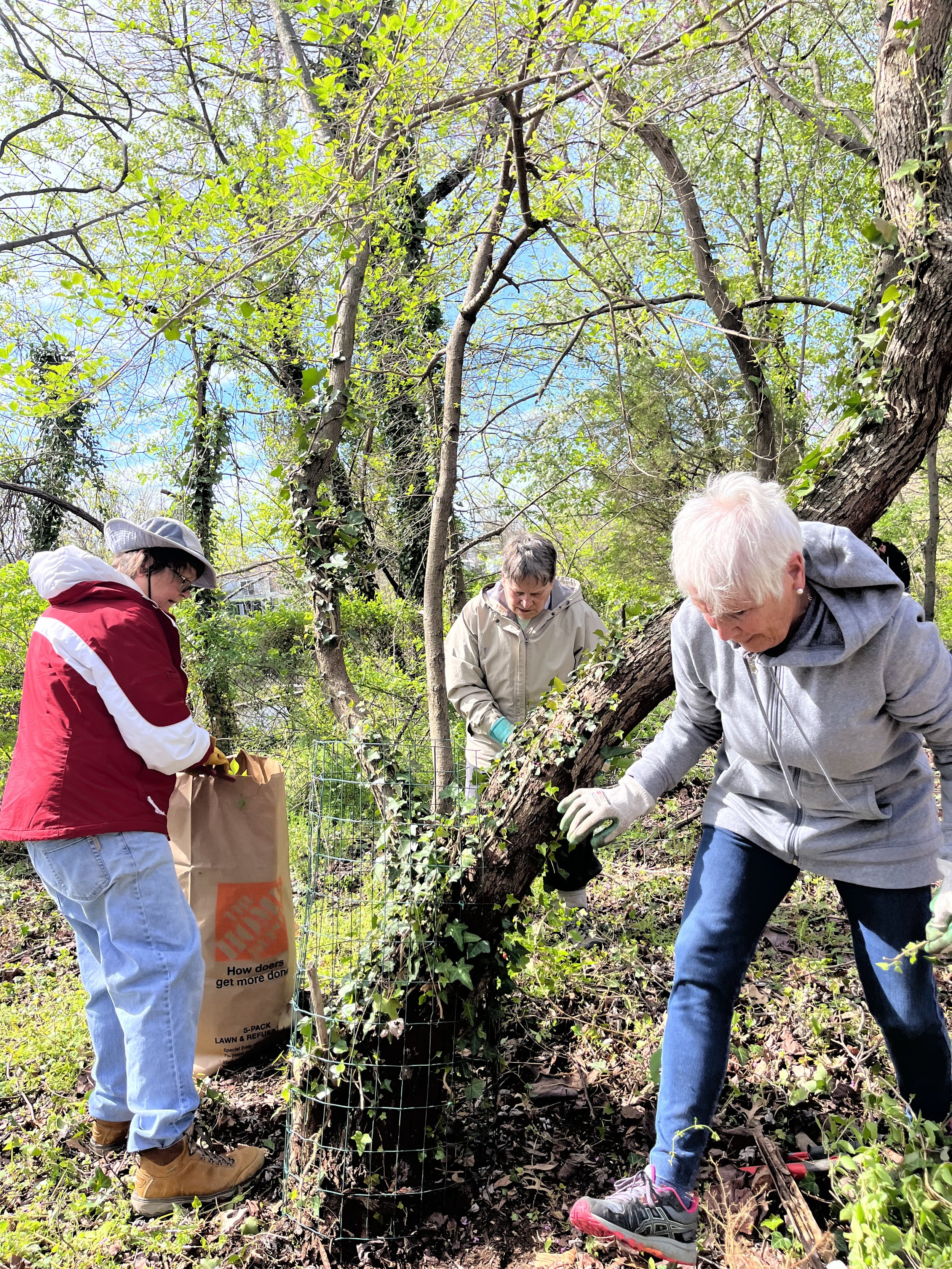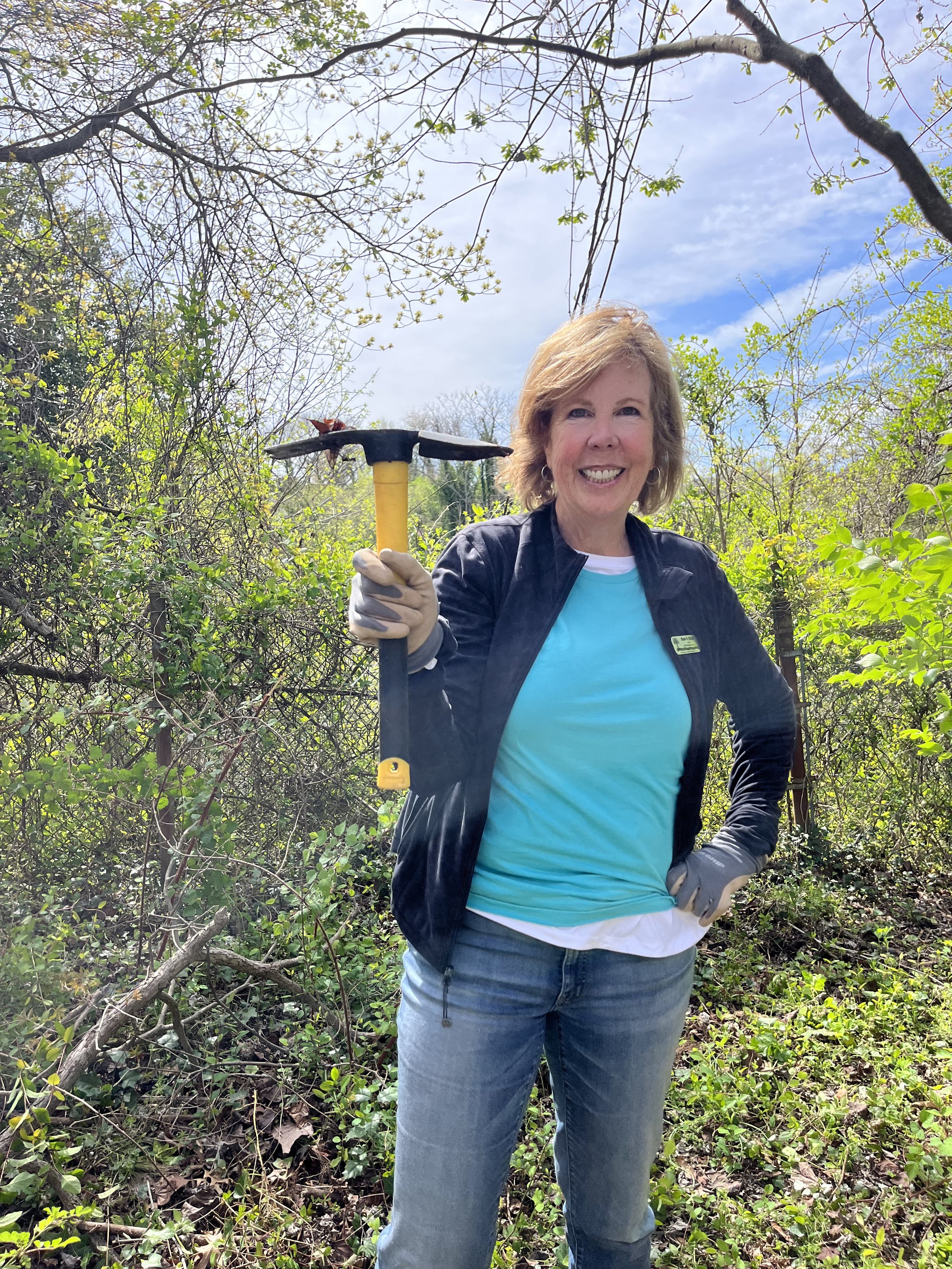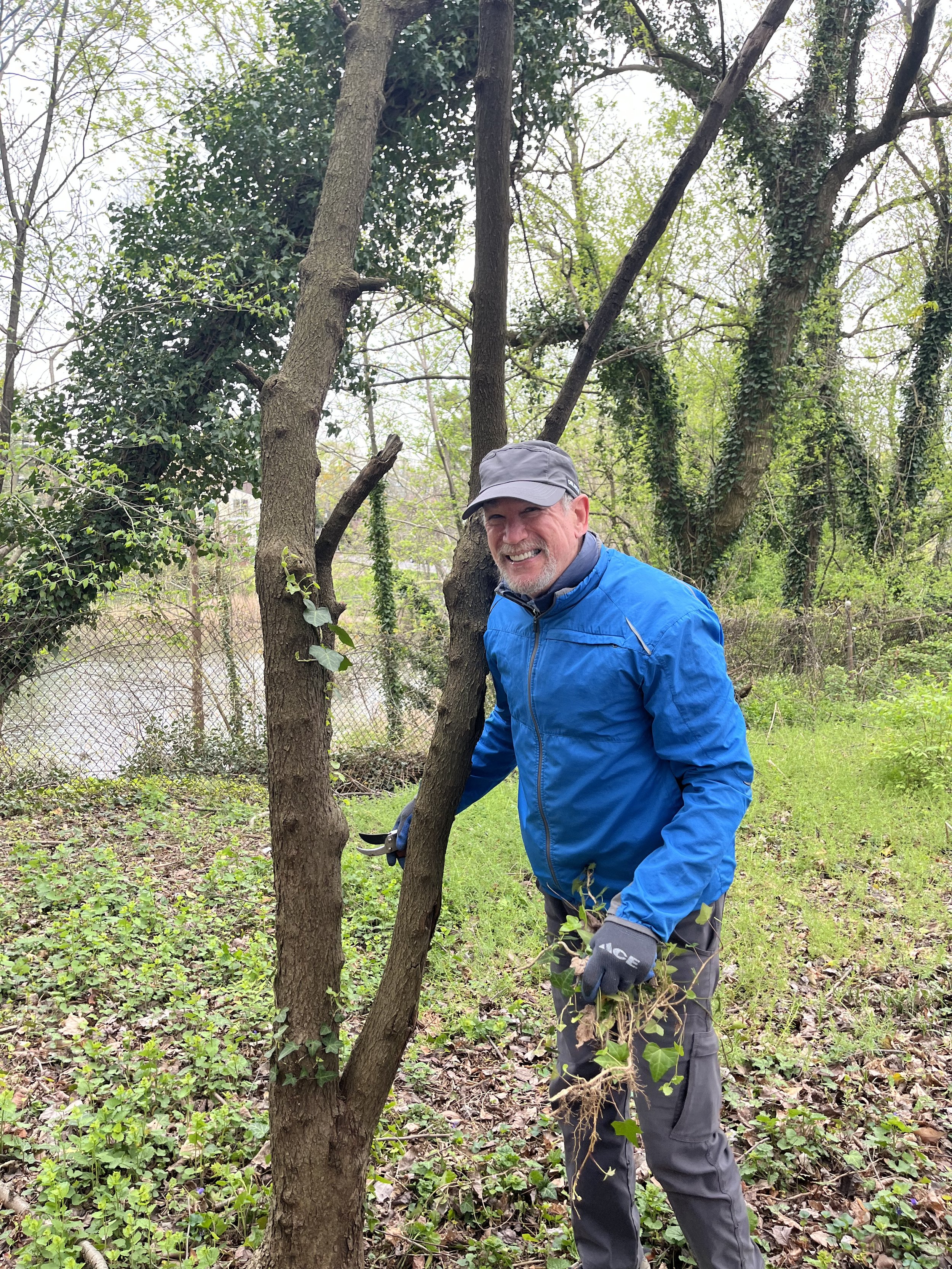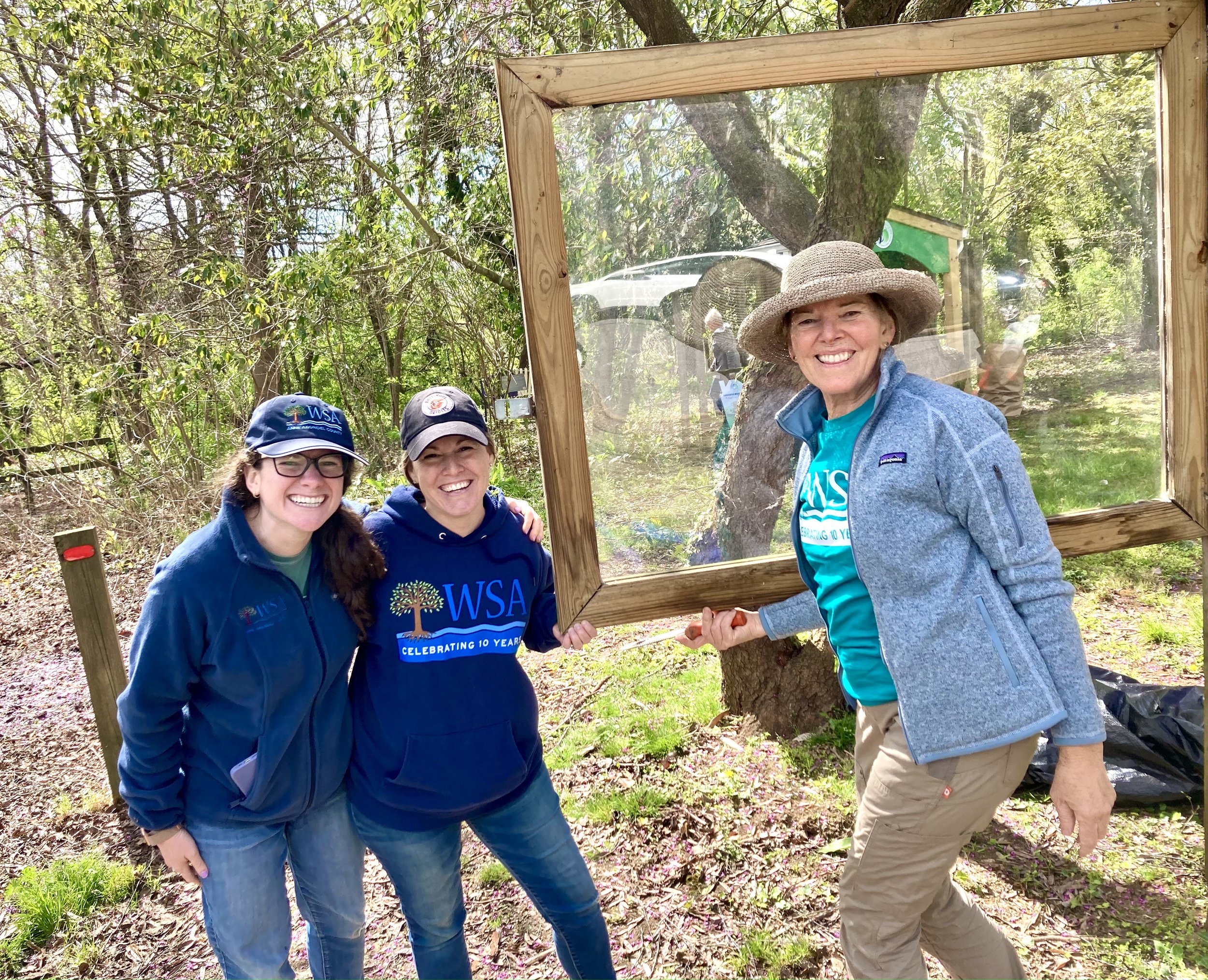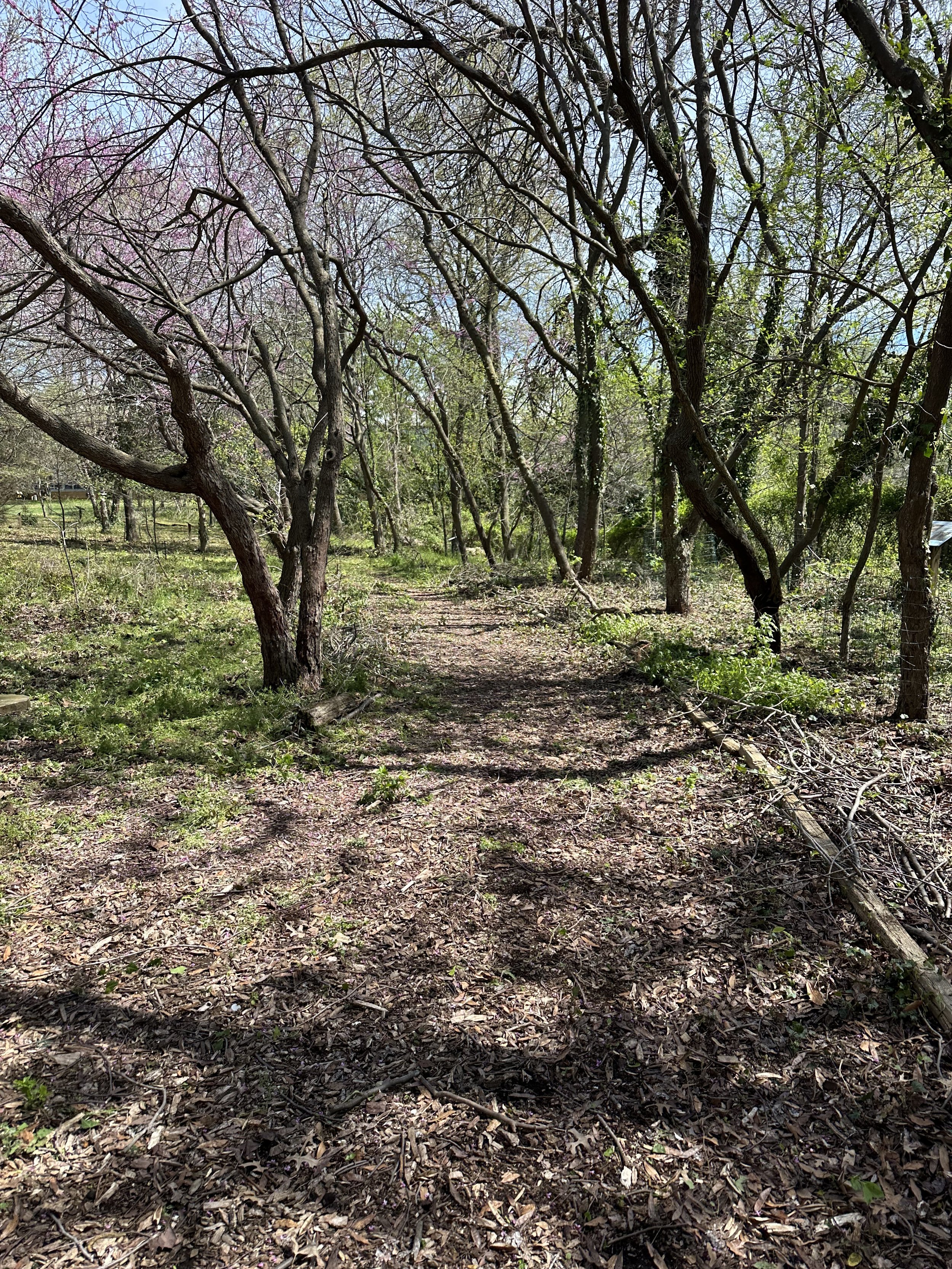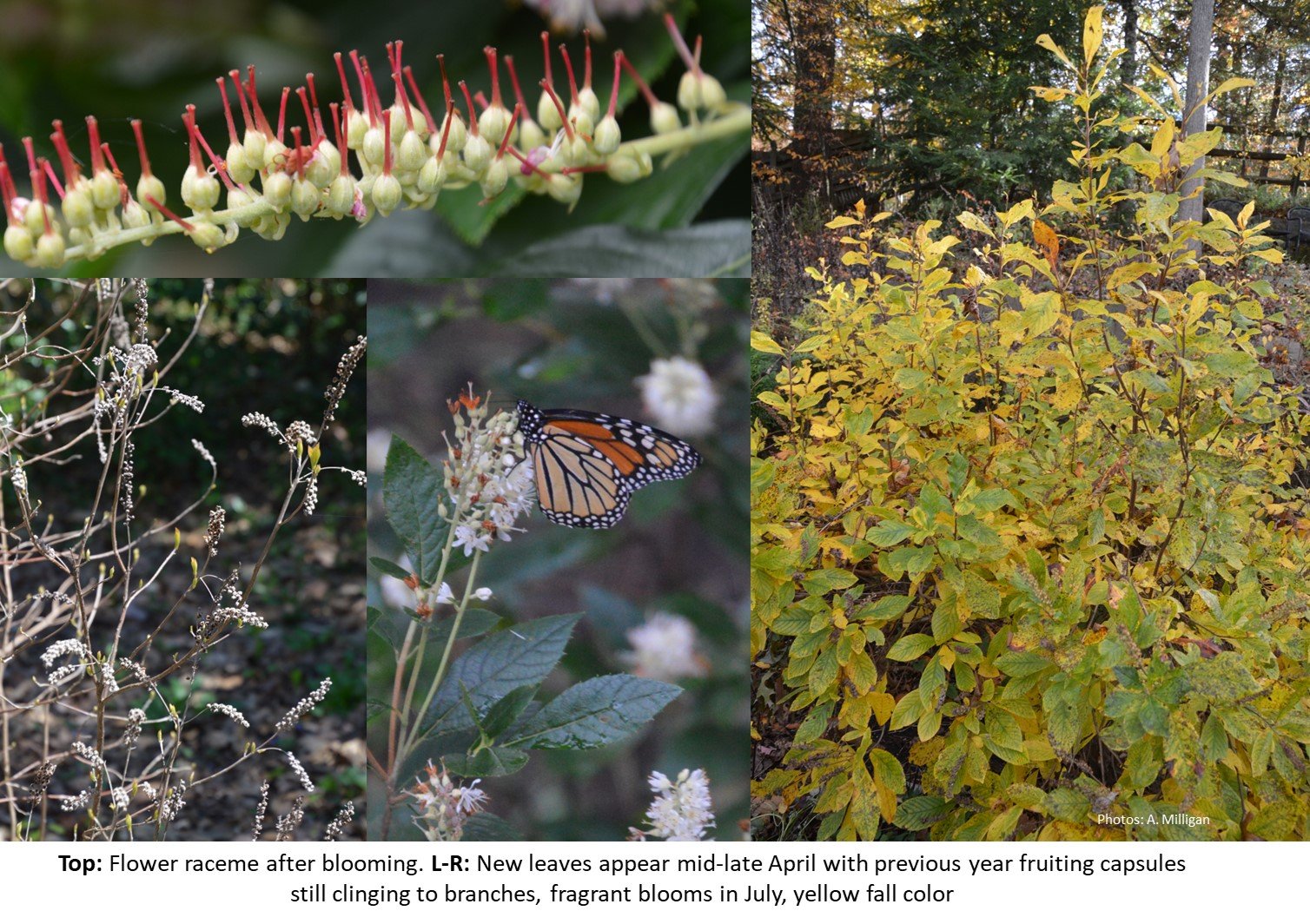We are delighted to announce that the students of Annapolis High School (AHS) have completed a native plant oasis project in Quiet Waters Park!
The plan for this fantastic accomplishment began last June when Save Our Trees met with the IB Program Staff at AHS to discuss the possibility of educating students on the threat of invasives and the importance of native plants.
Last Fall, Save Our Trees made several class and assembly presentations that were followed by three field trips to Quiet Waters Park during the 1st, 2nd and 3rd marking periods. Between 15 and 20 students participated in each trip clearing invasives and planting native shrubs and plants donated by The Friends of Quiet Waters.
The students also took part in a “hike and learn” to the South River Overlook with Quiet Waters’ Park Ranger, Liz Schiller and Horticulturalist and Watershed Steward, Matt Pruett who spoke on invasive plants and animals.
The creation of the oasis will showcase the threat of invasives and importance of native plants as well as the students’ very important contribution to the restoration of the natural environment.
A big thank you goes to the Quiet Waters team - Ranger Liz Schilder and Horticulturalist Matt Pruett for all the time they spent working with the students and helping coordinate the field trips and to The Friends of Quiet Waters for their generous donation of shrubs and plants.
To visit the “AHS Oasis”, follow the signs to the dog park and look for it to the right of the rest station.
Thank you Annapolis High School!!!
Save Our Trees Team
